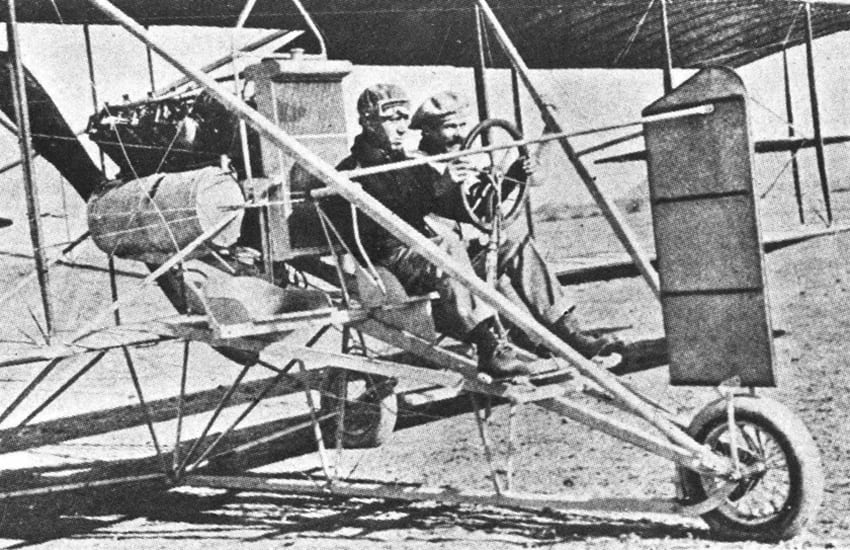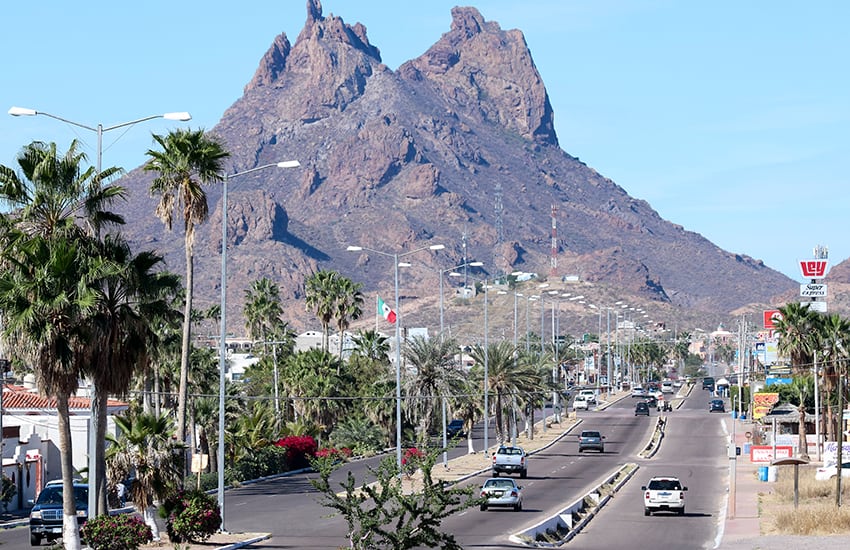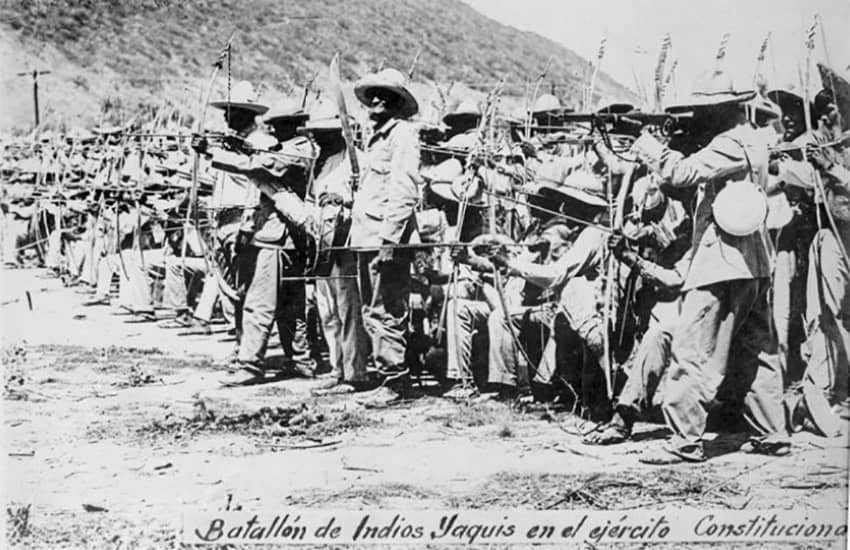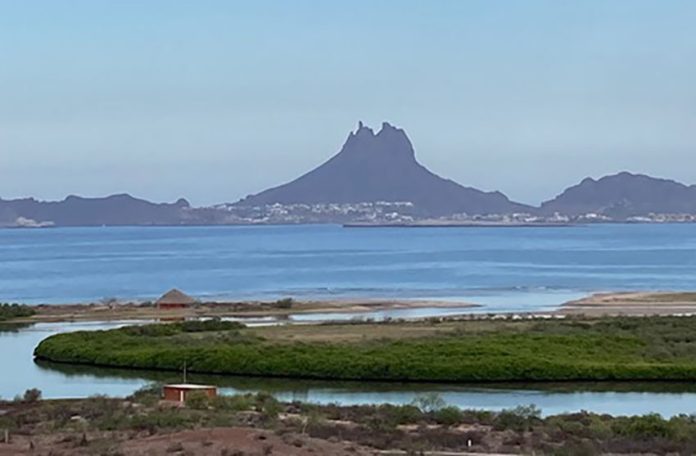It is said that the word guaymas means “throwing arrows at the head” in Cahíta, the linguistic family encompassing the languages of the Yaqui and Mayo pueblos of Sonora.
Guaymas is where an airplane named Sonora threw bombs, by hand, at the federal warships that were striking down the Sonoran revolutionaries on May 30, 1913, during the first aeronaval attack in world history. The heroic aircraft ended its days in Guadalajara — boneless, forgotten, with broken wings and rebaptized La Guajolota.
Guaymas is the ancestral land of the Guaimas people — a branch of the Seri (Comcaac) or “people of the sand” in Cahíta — who wore pelican feathers and skins and fished, hunted and gathered the fruits of the land. It was a pueblo band that survived surrounded by the Yaqui in the south, the Seri to the northwest and the Apache in the far north until they finally faded away, merging seamlessly with the Yaqui and Pimas Bajos in the 19th century.
Guaymas is located just 11 kilometers from Empalme’s police station, where Charlie Chaplin surreptitiously wed Lillita Louise MacMurray on November 24, 1924. The British actor was forced to marry after being threatened with scandal, and the law, by the mother of Spanish descent of a bride who had become pregnant at the tender age of just 15 and who had played the part of a “flirting angel” in Chaplin’s 1921 film, The Kid. A railroad love affair in Empalme, the unlikely junction of two paths.
I keep among my trinkets a copy of Charlie and Lillita’s marriage certificate, which for years accompanied the huge black-and-white photograph of the immortal mime — atop a fireplace I never ignited during my refuge as a lonely bachelor in Guaymas long, long ago.

Guaymas is the desert, the sea, the sky; estuaries, bays, mangroves and sunrises and sunsets ignited by fire. It is the intertidal zone, where every day the sea and the land merge in a slow-motion waltz, somewhere between the highest and lowest tides. Guaymas is Estero Tastiota, Bacochibampo Bay, the Sleepy Lion, El Cochori, San Carlos Bay, Vícam, Pótam and Bay of Lobos.
Guaymas is Estero del Soldado, the protected area in San Carlos that’s a favorite home for American migrant birds that a band of brave university professors from the Tecnológico de Monterrey saved from certain death at the hands of unscrupulous developers — a fate that Estero Miramar could not escape because of the developers’ gluttony and because the professor’s band had dispersed.
Guaymas is the Teta Kawi (sometimes called Tetas de Cabra, or goat tits), the heart of an extinct volcano sculpted by the winds and shadows of time — tekalaim in the Yaqui language, the enormous tongue-shaped mountain of the serpent that breastfed us all.
Guaymas is Mexican giant cardón, saguaro, and jumping cholla cacti; ocotillo and elephant, mesquite, palo verde, ironwood and jito trees. It is the gila monsters, rattlesnakes, scorpions, Mexican bed bugs and yellow-bellied sea snake — the one that has a paddle tail to swim backward and forward.
Guaymas is fin whales, orcas, bottlenose dolphins, sea lions, leptocephalus larvae that slowly eat themselves as they grow old and skulls of undescribed pigmy beaked whales floating in bars on lonely beaches. And, of course, Guaymas is endearing amigos from both sides of the border and a white-headed British gentleman.
About 482 years ago, on September 14, 1539, Francisco de Ulloa arrived at Guaymas’ enchanting bay. The great Spanish navigator, explorer, and overachiever was the first person to sail the entire coast of the Baja California peninsula, only to be devoured by the waters of the Pacific Ocean in his ship, the Trinidad. He was the captain who baptized the Gulf of California first as the Vermillion Sea, then as Mar de Cortés in honor of Hernán, the conquistador and his boss.

Guaymas was founded as San José de Guaymas on August 31, 1669 by José de Gálvez y Gallardo, visitor-general of New Spain — he eventually became the Marqués de Sonora and Viscount of Sinaloa — who arrived in Sonora with the impossible mission of subjugating the indomitable Seri, Pima, Ópata, Sobaipuri and Apache.
The Spanish army came to Guaymas, seduced by the magnetic greed for pearls, gold and silver — invaders who tried time after time to take over the territory north of the Yaqui River. These fair-skinned European invaders were repelled time after time by battle-hardened Yaquis, for whom the most precious possessions weren’t metals but their natural resources.
Guaymas was officially named the “Heroic City of Guaymas” in 1935 in honor of the memorable Battle of Guaymas on July 13, 1854, which defended the seaport from the insurrection of French residents who wanted to establish an independent republic of Sonora.
They were led by Gaston de Raousset-Boulbon, a French pirate who, after sailing the Atlantic in 1850 from Bordeaux to America, heading to Mexico, made a stopover in the Panamanian Caribbean while it was still part of Colombia. That was the Guaymas of then 2,000 inhabitants, made up of mostly European and South American emigrants who, with the Guaimas and Yaquis, joined the Mexican army to defeat the French and execute by firing squad the despicable Gaston.
In downtown Guaymas, 161 steps from the statue of El Pescador, that giant fisherman who sits gazing at the horizon in case a foreign enemy dare invade again, is the heart of the only Plaza of the Three Presidents in the entire world: Guaymas-born Plutarco Elías Calles, Adolfo de la Huerta and Abelardo L. Rodríguez. Both the fisherman and the presidents’ statues were made by the Spanish-born nationalized Mexican Julián Martínez Soros.
Offshore, 2,000 meters deep, the Guaymas Basin bubbles forth primordial ooze from one of the greatest abysses of the Gulf of California, where, inch by inch, new sea floor is being built as I write this essay.

Guaymas is the “Barca de Guaymas,” the most nostalgic song ever sung about the coastal port where John Steinbeck and Ed Rickets anchored on April 5, 1940, during their epic voyage onboard the boat Western Flyer, their adventures immortalized in the book Log from the Sea of Cortez, the narrative of two seagoing apprentices escaping debts, love affairs gone bad and evil gossiping tongues.
Upon arriving in Guaymas on August 2, 1979, 42 years ago today, I burned my ships. I’m Colombian by birth, Mexican by adoption and guaymense by heart. Here I surrendered to the sea, and here I found true love.
Here, at the Pearl of the Sea of Cortés.
To Patricia, Pía, Omar
Omar Vidal, a scientist, was a university professor in Mexico, is a former senior officer at the UN Environment Program and former director-general of the World Wildlife Fund-Mexico.
